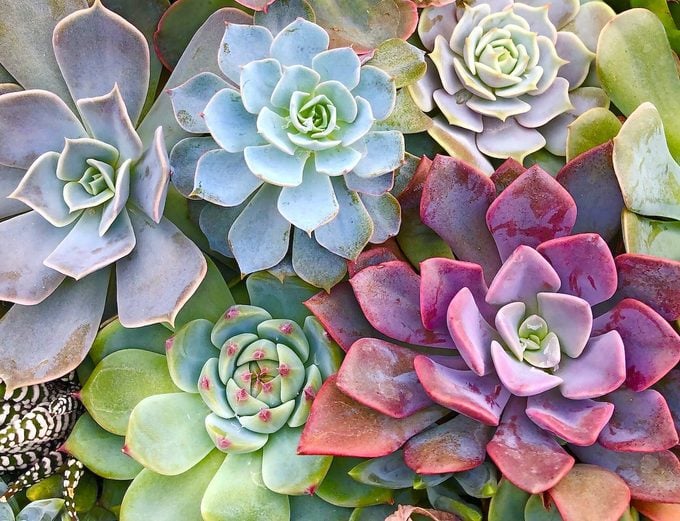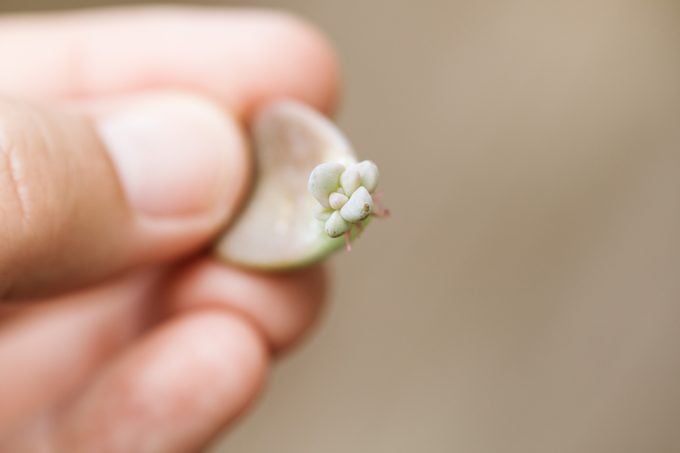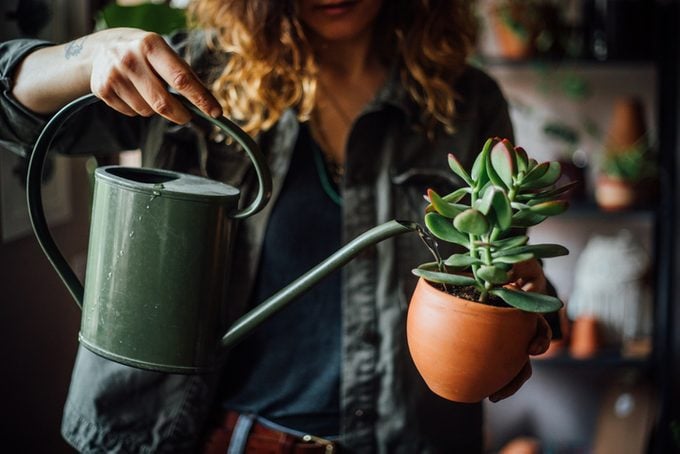How to Propagate Succulents (for More Free Plants!)
Updated: Nov. 06, 2023
Follow this easy step-by-step guide to learn how to propagate succulents from leaves and cuttings. Before you know it, you will have succulents to share.
Our editors and experts handpick every product we feature. We may earn a commission from your purchases.

Propagating succulents from stem or leaf cuttings is an easy way to share plants or expand your own collection, says Aaron Ryan, director of inventory at Devil Mountain Wholesale Nursery in Petaluma, California. You can propagate succulents year-round, but it’s easiest during warm, humid months. Follow Aaron’s tips on how to propagate succulents from stems or leaves.
Important note: Patented plants should not be propagated; it may be illegal to create new cuttings. Patent fees support breeders and their work to create new plants.
Psst—learn how to propagate more plants easily.
How to Propagate Succulents: Gather Supplies First
When it comes to tools, the most important thing is to sterilize them. “Make sure you’re not using dirty tools, because it’s very easy to pass bacteria or viral infection from one plant to another,” Aaron says.
Don’t be nervous—Whether you use a bonsai knife, Japanese snips or clippers, clean your tools and wipe them with isopropyl alcohol before cutting. You’ll also need clean pots, open flats or liner trays with drainage holes, and succulent potting soil.
Check out the top 10 plants to propagate that grow from cuttings.
Make the Cut
You can root a stem of any size from a multi-branching succulent, Aaron says. Make a cut right below a growth node and strip off extra leaves, leaving two or three at the top. “You need some leaves for the plant to feed itself, but unnecessary leaves might take energy away from the rooting process,” he says.
Stick the cut end 1 to 2 inches into a porous, fast-draining soil mix that can dry quickly. “You never want to have wet feet with succulents; they will rot,” he adds. Compress the soil so the cutting stands upright.
Learn how to grow and care for haworthia succulents.
Peel a Leaf

A few leaves can produce many succulent rosettes, Aaron says. Select thick, healthy leaves near the base. Detach them carefully and completely by grasping each leaf where it meets the stem and peeling it downward.
“If you just rip it off, you’ll lose all the marrow stem tissue and the leaf will rot away,” he says.
Set the detached leaves flat on the surface of a damp bed of 75% perlite and 25% ground-up fir bark, redwood bark or peat. Sometimes, you’ll get two or three rosettes from one leaf.
Check out the top 10 colorful succulents you should grow. Plus, learn what this gardener wishes she’d known before planting her succulent garden.
Find the Right Location
Cuttings root better in bright, airy and humid spots away from direct sunlight or heat. Rooting time depends on the species but might begin after two weeks. After about four weeks, pull gently on your cutting to see if it has rooted. You will have a fully rooted cutting to transplant into a 4-inch pot or a 1-gallon container within five weeks, Aaron says.
Try one of these low-light houseplants in a dark corner of your home.
Water Just the Right Amount

Cuttings need regular moisture until they grow roots, but be sure you are not overwatering. “The key is to water infrequently but deeply,” Aaron says. “Let the soil approach dryness between watering.” Are donkey’s tail succulents invasive? Here’s what you should know.
Once fully rooted, succulents store water in their roots, stems and leaves, making them drought-tolerant plants.
Need a new container for your succulent? We found mini planters to suit any decorating style.
Watch for Pests When Propagating Succulents
Take cuttings from your healthy plants only. Good airflow helps prevent infestations of mealybugs and gnats, Aaron says.
“Mealybugs are really detrimental to succulents, causing deformation of the leaves. And with young plants, you have to be especially vigilant about keeping them away,” Aaron says.
Get more tips on how to get rid of indoor plant bugs.
Have Fun Experimenting
“Propagating is like mad science; it’s so fun,” Aaron says. “Once you get good at propagating from succulent cuttings, try your hand at woody perennials and softwood and hardwood cuttings. Succulents are a great way to learn.”
Next, learn how, when and why you should divide perennials.




















